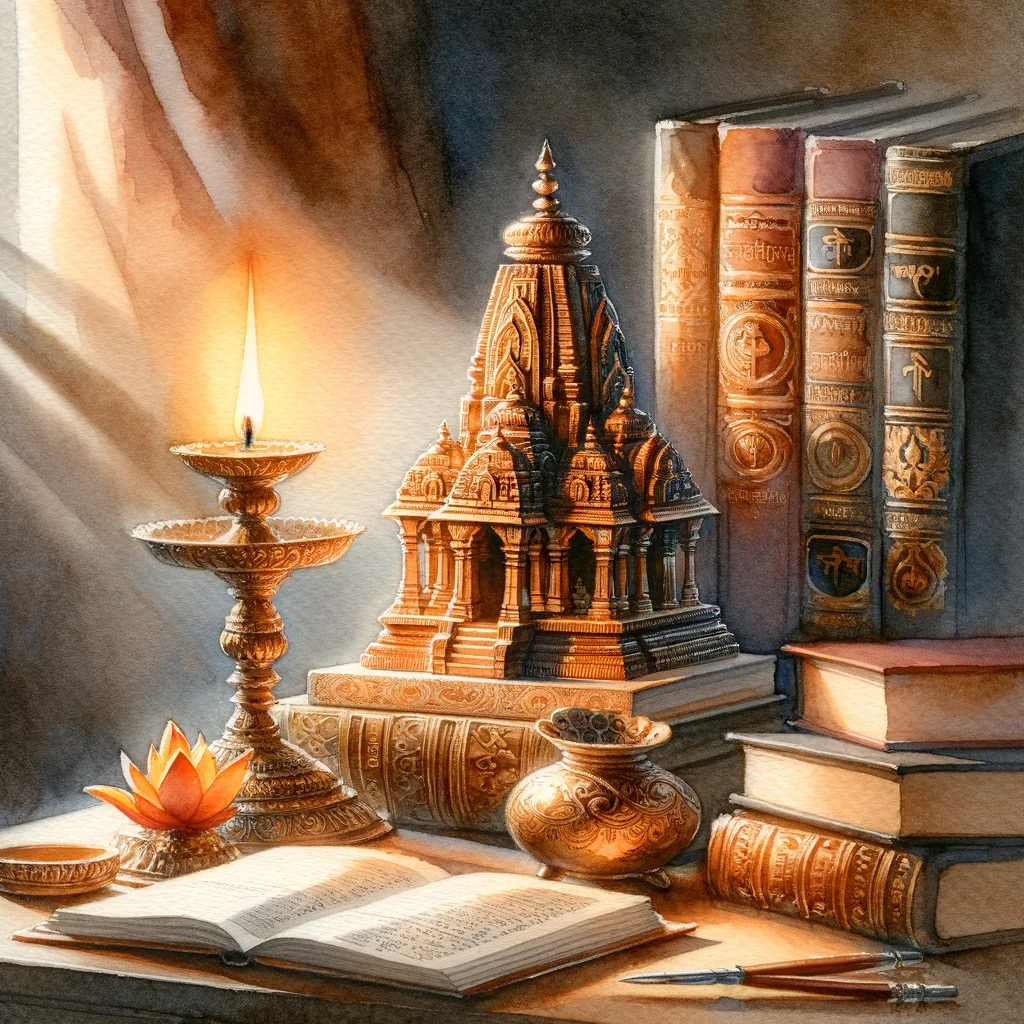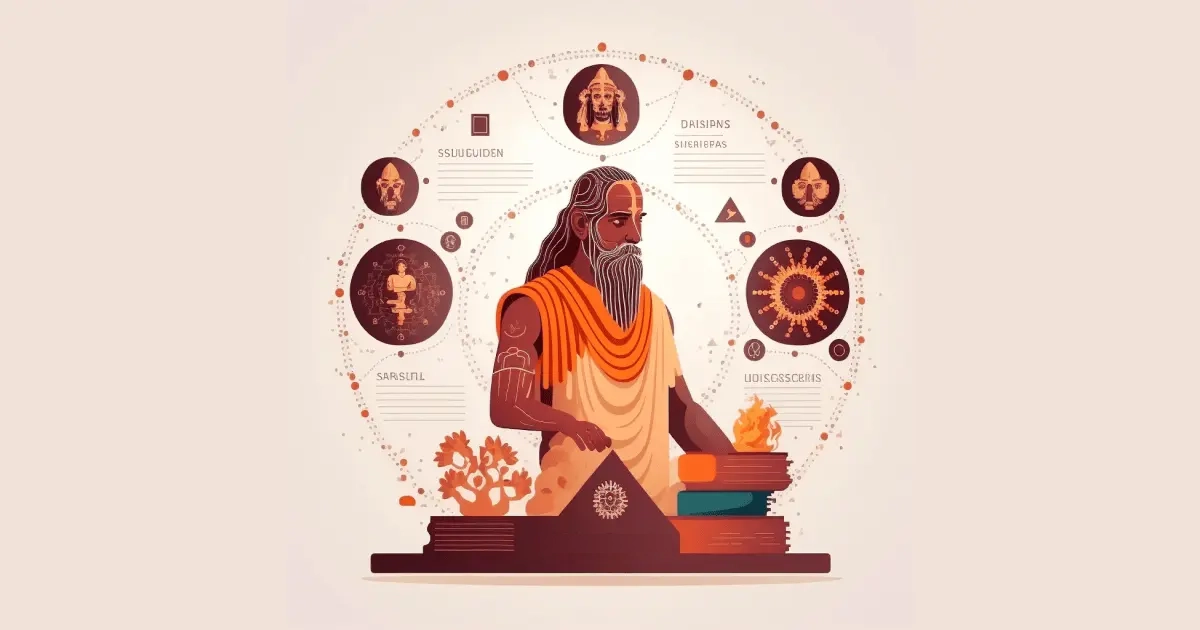
Online Courses
Courses
Explore Brhat's comprehensive courses on culture, philosophy, and heritage. Join our educational programs and workshops.
Past Courses
// course
Mitrasaṃprāpti: The Art of Friendship in Pañcatantra
Pañcatantra is far more than a beloved collection of animal fables. It is a brilliant exposition of the Arthaśāstra wrapped in narrative delight. T...
By Dr. Vishwanath M. V.
13 Dec - 18 Jan 2026
// course
Itihāsa Through Śāstric Lens - Rāmāyaṇa and Mahābhārata
This foundational course explores the Rāmāyaṇa and Mahābhārata through a Śāstric lens, empowering participants to critically understand their narra...
By Śrī Raghothama Rao
07 Nov - 07 Dec 2025
// workshop
Śrī Devī Vaibhavam
This śāradīya navarātri let us explore the powerful yet nurturing tattvam of ‘devī’ ‘mā’ with bhakti, through śāstras.
By Śrī Manikanta Somayaji Terala
19 Sep - 20 Sep 2025
// course
Dhīvāk : PrārabdhiḥSanskrit Through its Texts: Level 1
Courses that focus on reading ancient texts are usually grammar heavy. In this course however, we aim to teach the full version of the Sanskrit lan...
By Śrī Rama Seshan
13 Sep - 07 Dec 2025
// workshop
An Indian Psychological Approach to Well-being: Tuning to Cosmic Wisdom
This workshop is designed as an experiential learning journey that guides participants from the fragmented awareness of modern life toward a unifie...
By Ms. Roopali Das
24 Aug - 25 Aug 2025
// workshop
Mahāgaṇapati Vaibhavam
This Gaṇeśa Caturthī let us delve into the tattva of Mahā-Gaṇapati as revealed in the Veda, Purāṇa, Tantra, and Yoga traditions, followed by learni...
By Śrī Manikanta Somayaji Terala
21 Aug - 22 Aug 2025
// workshop
Svabhāva & Svadharma- Foundation of Individual and Planetary Flourishing
Discover your Svabhāva i.e. your inherent, earth-rooted nature. Redefine your purpose through your Svadharma to consciously co-create a better world.
By Dr. Mala Kapadia
26 Jul - 03 Aug 2025
// workshop
Western Sociology Crisis: Blaming the Majority is Unscientific
This 3-day online workshop critically examines the dominant theories in Western sociology that frame the majority population as inherently oppressi...
By Dr. Kausik Gangopadhyay
04 Jul - 06 Jul 2025
// workshop
Rajasvalā Paricaryā
This workshop will cover the basic introduction to rajasvalā paricaryā, and teach women the āyurvedic way of menstrual healthcare.
By Anshu Dubey
29 Jun - 30 Jun 2025
// course
Introduction to Pañcāṅgam and Muhūrta
Following the enthusiastic response last year with over 700+ participants, this course on Pañcāṅgam—the Indian calendrical system— is now added wit...
By Nilmadhab Prasad Sahi
05 Jun - 20 Jul 2025
// workshop
Introduction to Ānvīkṣikī - Critical Inquiry to Develop a Dhārmika Worldview
Learn how dharma uses critical reasoning to navigate the world.
By Raghava Krishna, Dr. Srinivas Jammalamadaka
03 May - 04 May 2025
// course
Core Principles of Indian Philosophy - Bharatiya Darshana - Nastika and Astika
Diverse philosophical views shaped Bhārata’s spiritual core, and the guiding principles of these hold timeless wisdom. This course is an attempt to...
By SN Sudharsan
29 Mar - 06 Apr 2025
// course
Introduction to Hindu Iconography 3.0
Following the resounding success of two editions of Hindu Iconography by Śrī Ramakrishna Kongalla last 2 years, we bring the third edition of 'Intr...
By Ramakrishna Kongalla
25 Feb - 09 Mar 2025
// workshop
Pañcatantra - An Insightful Road to Arthaśāstra
This workshop will explore how Pañcataṅtra looks at governance and arthaśāstra.
By Dr. Vishwanath M. V.
07 Dec - 08 Dec 2024
// course
Leveraging AI to Protect, Preserve and Promote Hindu Dharma
Artificial Intelligence (AI) has the transformative potential to serve as a powerful tool in the protection, preservation, and promotion of Hindu D...
By Ramsundar Lakshminarayanan
09 Nov - 24 Nov 2024
// course
Introduction to Pañcāṅgam - The Indian Calendrical System
This course provides a comprehensive introduction to the Pañcāṅgam, exploring its five key elements and practical uses in both traditional and cont...
By Nilmadhab Prasad Sahi
05 Oct - 10 Nov 2024
// workshop
Introduction to Permaculture
A workshop that ushers you to the regenerative world of Permaculture ethics and principles. Learn to live and work together with Mother Nature.
By Utsow Pradhan
28 Sep - 29 Sep 2024
// workshop
Soilstry 2.0
This workshop addresses the critical soil crisis affecting our urban landscapes, providing you with essential knowledge and practical skills to mak...
By Utsow Pradhan
21 Sep - 22 Sep 2024
// course
The Supranational Complex, A Critical Introduction
Explore the intricate world of global governance through this course, as it examines the aims, operations, and influence of the UN and multilateral...
By Rahul Goswami
26 Jul - 28 Jul 2024
// course
Rediscovering Indian Knowledge: A Cultural and Educational Exploration through the Works of Śrī Dharampal
This course will delve into the contribution of Śrī Dharampal, a distinguished Indian scholar whose research uncovered the rich educational systems...
By Anurag Shukla
17 Jun - 19 Jul 2024
// workshop
Soilstry
This workshop addresses the critical soil crisis affecting our urban landscapes, providing you with essential knowledge and practical skills to mak...
By Utsow Pradhan
15 Jun - 16 Jun 2024
// workshop
Indic Manuscriptology: Bhāratīya Pāṇḍulipi Vijñāna
This workshop will briefly cover the scope, preservation and current status of manuscripts in India.
By Ms. Sumithra Veeraraghavan
18 May - 18 May 2024
// workshop
Generative AI for Indic Creatives
This workshop proposes to introduce participants to this rich, new technological landscape and familiarize them with the tools and methods of creat...
By Amritanshu Pandey
27 Apr - 28 Apr 2024
// course
Principles of Sanātana Dharma
This course provides a big picture overview and context for those willing to learn about Sanātana Dharma. Traversing Vedas, Upaniṣadas, Darśanas an...
By SN Sudharsan
20 Apr - 04 May 2024
// course
History of Hindu Mathematics
This course explores the rich tradition of Hindu mathematics, highlighting its foundational contributions to various branches of mathematics, its t...
By Bhaskar Kamble
18 Mar - 01 Apr 2024
// course
Introduction to Hindu Iconography 2.0
After the tremendous success of the first edition of Hindu Iconography by Śrī Ramakrishna Kongalla in 2023, we are delighted to bring to you the 2n...
By Ramakrishna Kongalla
21 Jan - 04 Feb 2024
// course
Introduction to Āyurveda
This course highlights the fundamental principles of healthy life based on teachings of Āyurveda, how to cultivate a healthy lifestyle and diet acc...
By Dr. P. Rammanohar
13 Nov - 29 Nov 2023
// course
Introduction to Kāvyaśāstras
The juice of life or rasa, pervades every aspect of a rasika’s life. And kāvya is an expression of that rasa in its highest form. Bhārata has had a...
By Dr. Gauri Mahulikar
23 Oct - 04 Nov 2023
// course
Ancient Indian History
The unique story of a culture is captured in its history. But the arbiters of historiography have labeled every culture apart from their own as myt...
By Amritanshu Pandey
05 Sep - 19 Sep 2023
// course
Mahābhārata Pārāyaṇa
Journey into the epic of Mahābhārata, where author Ami Ganatra will dispel common myths and present lesser known facets of the timeless epic, from ...
By Ami Ganatra
03 Aug - 28 Aug 2023
// course
World Civilizations - An Indic View
India is unique, but how is its uniqueness defined in relation to other civilizations? This course will contrast the various civilizations of past ...
By Amritanshu Pandey
15 Jul - 31 Jul 2023
// course
Mind and Mental Health: Expositions from Patañjali’s Yoga Sūtras
Yoga darśana by Patañjali is a systematized discipline providing a means of attaining the highest consciousness, leading to final liberation. This ...
By Dr. Richa Chopra
30 Jun - 08 Jul 2023
// course
Introduction to Śrī Sita Ram Goel
Śrī Sita Ram Goel was one of the finest historians of 20th century Bhārata and the founder of Voice of India. He did a pūrva pakṣa of monotheistic ...
By Pankaj Saxena
11 Jun - 29 Jun 2023
// course
Śrīmad Vālmiki Rāmāyana Pārāyana
This course will discuss the 7 Kāṇḍas of Vālmiki Rāmāyaṇa and shed light on interesting details and clarify the common misconceptions.
By Ami Ganatra
13 Mar - 23 Mar 2023
// course
Hindu Iconography
This course will discuss the Śilpakalā on the temple walls, and study the techniques of identifying (despite their ransack/plunder during Islamic i...
By Pankaj Saxena, Ramakrishna Kongalla
06 Jan - 20 Jan 2023
// course
Introduction to Shri Ram Swarup
Śrī Ram Swarup was one of the greatest Hindu thinkers to come out of India in the last century. This course is an introduction to his works and tho...
By Pankaj Saxena
31 Jul - 21 Aug 2022
Our Draṣṭā online courses are designed to help you in your learning journey
Become a part of the community and engage, share, discuss and deepen your learnings
Interact with the course instructor through live sessions
Access to session recordings and materials


Become a member and dive into the Indic universe
Brhat subscription gives access to exclusive member-only content rooted in the Dharmic worldview.
Starts at ₹500 per month.
